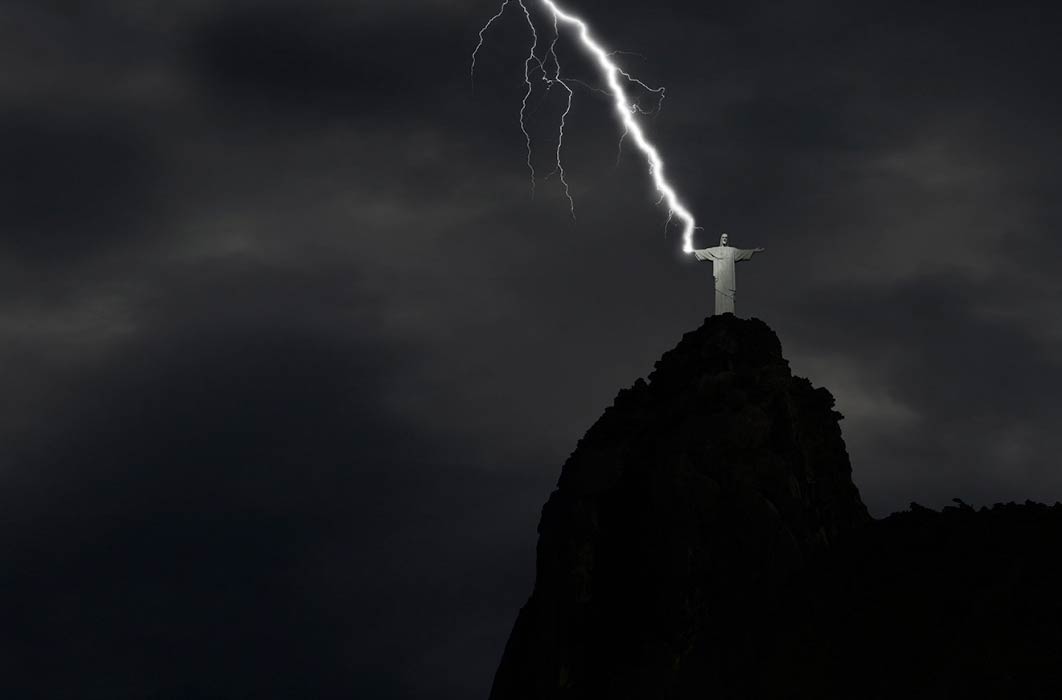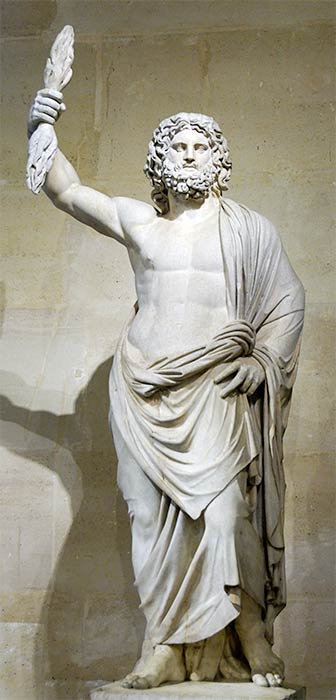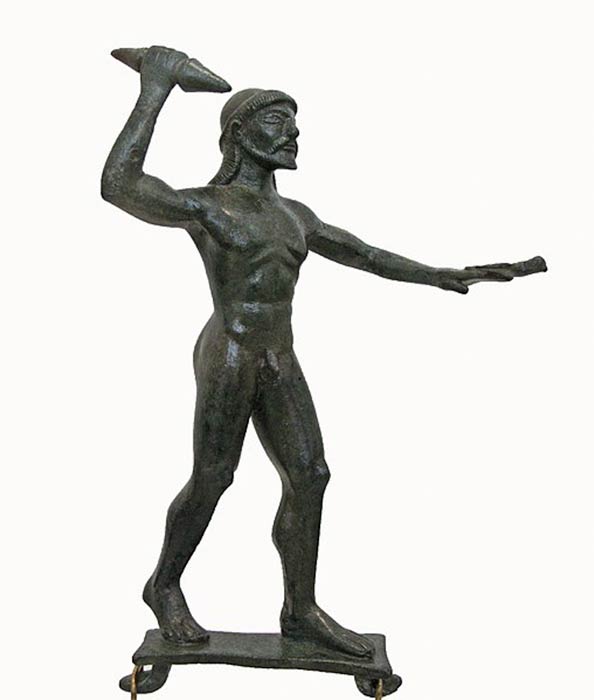
Thunderbolt And Lightning: The Divine Spark That Shaped History
For millennia the phenomenon of lightning has been shrouded in mystery, inspiring much fascination by humans, who for the longest time lived outdoors in the shadows of these cosmic blasts of light. Modern humans have knowledge of lighting’s true nature and are able to balance its irregular flows that link water laden clouds with the earth. This powerful and threatening natural wonder, capable of exploding trees and setting crops alight, which has not yet been harnessed, scorched its legacy on world religion, mythology and folklore many thousands of years ago.

Statue of an anonymous male deity brought to Louis XIV, restored as Zeus by Pierre Granier (1686) (Public Domain)
Modern Symbol Of Power
Today the thunderbolt is a universal electrical symbol and used as a logo, by rock bands such as the Australian hard rock band AC/DC, to notorious fascist organizations such as the Schutzstaffel, the British Union of Fascists, and the Union of Bulgarian National Legions (SBNL). In pop culture the thunderbolt symbol is featured on the chests of the costumes worn by Captain Marvel, the Flash, Black Lightning, and Static and in the Marvel Universe the thunderbolt is the symbol seen on the torso of the costumes worn by Electro, Quicksilver, Black Bolt. Its association with power is the reason the thunderbolt is also a prominent symbol in modern heraldry and military iconography.

Bronze statuette of Zeus, found at Ambrakia, Aitoloakamania. The god holds the thunder with the right raised hand. An eagle on his extended left hand (490-480 BC). National Archaeological Museum, Athens(CC BY-SA 2.0)
Thunderbolt Of The Gods
Ancient hieroglyphs, carved stones and works of art also depict thunderbolts, which were symbolic representations of lightning strikes, accompanied by a crash of thunder. This perceived manifestation of divinity has been used as a powerful symbol throughout history, evident in the religions, mythologies and folklore of ancient cultures, most often as the divine weapon of sky gods threatening imminent destruction on earth. An example is Viracocha, the supreme creator deity of the pre-Inca and Inca mythology in the Andes region of South America, who was one of the most important deities in the Inca pantheon and regarded as the creator of all things: the substance from which all things were created. In the ancient city of Tiwanaku, in modern-day Bolivia, the Gate of the Sun is a ten-ton megalith dating to about 200 BC and at its apex it features the creator god Viracocha holding a bolt of lightning in each hand.

From Hergé's “Tintin et le Temple du Soleil”, this drawing of the Andean creator god Viracocha is based on the central figure on the Gate of the Sun in Tiwanaku in Bolivia. (Public Domain)
According to historians Paul Herrmann and Michael Bullock in their 1954 book Conquest by Man in Indo-European mythology the thunderbolt was greatly identified with the great Sky Father. This term was a direct translation of the Vedic Dyaus Pita, a name which descended from the same Proto-Indo-European deity name as the Greek Zeûs Pater, the Roman Jupiter and the Germanic Týr, Tir or Tiwaz, all of whom are reflexes of the same Proto-Indo-European deity's name, Dyēus Ph₂tḗr. Vedic and later Hindu mythology describe the vajra (lightning bolt) wielded by the god Indra.




